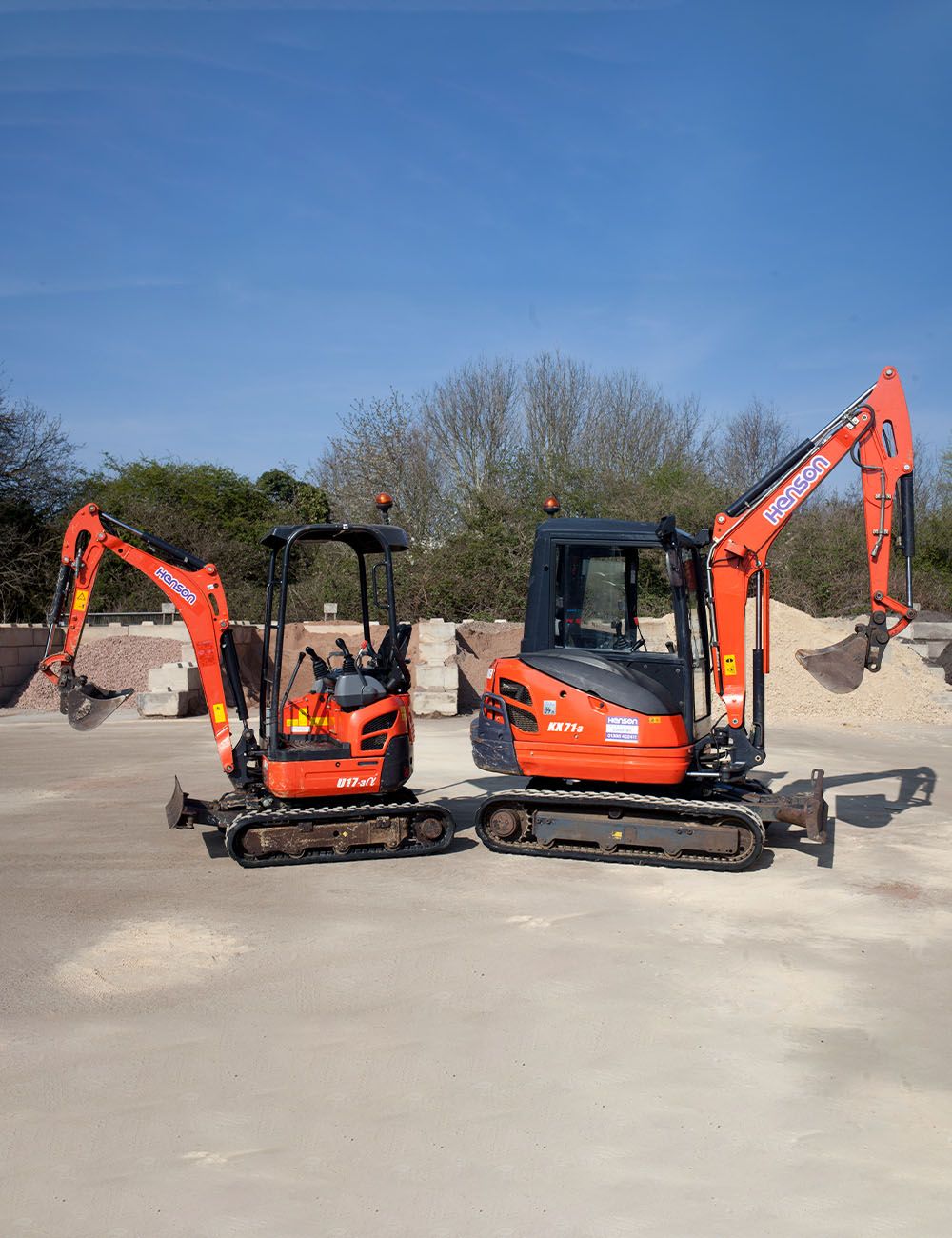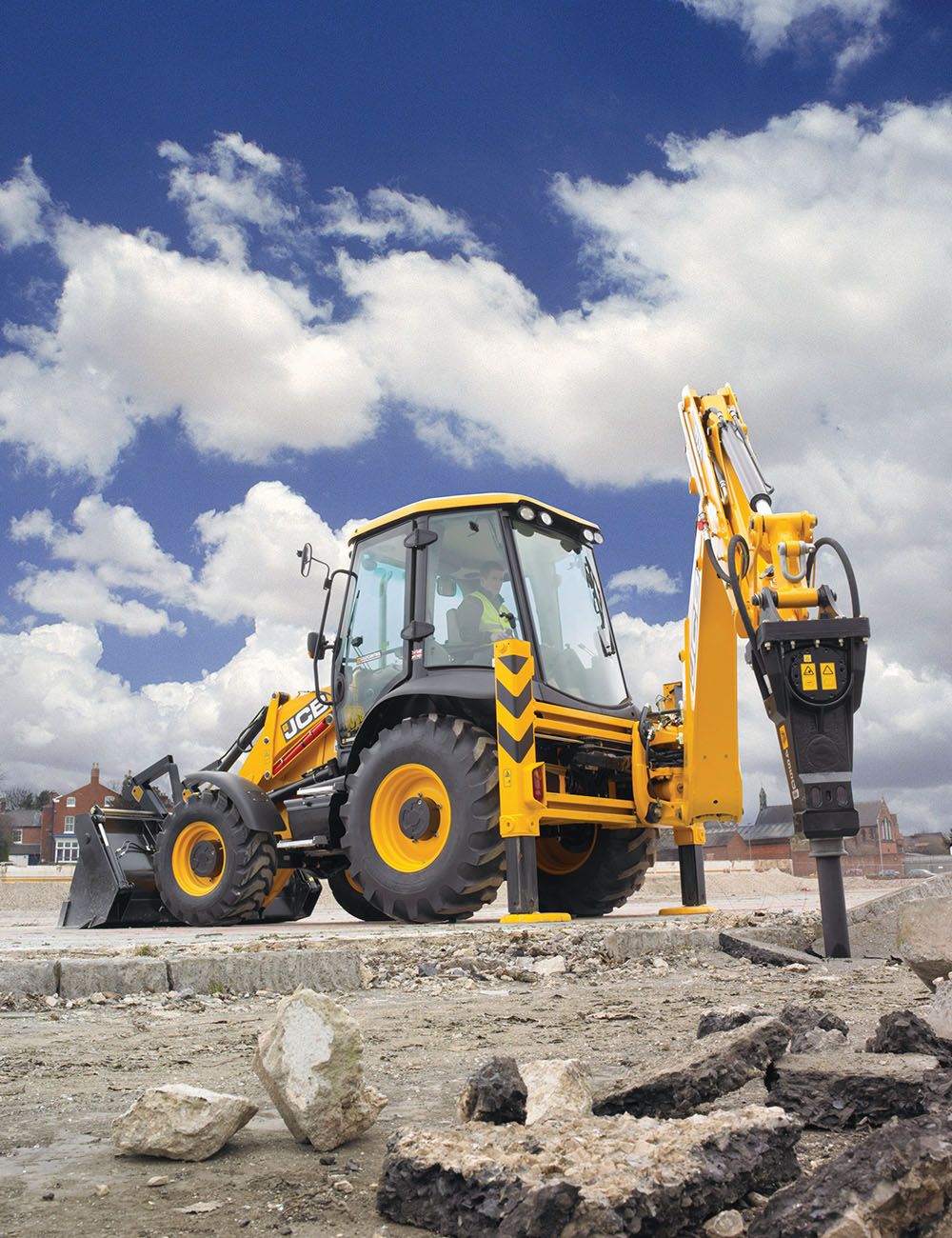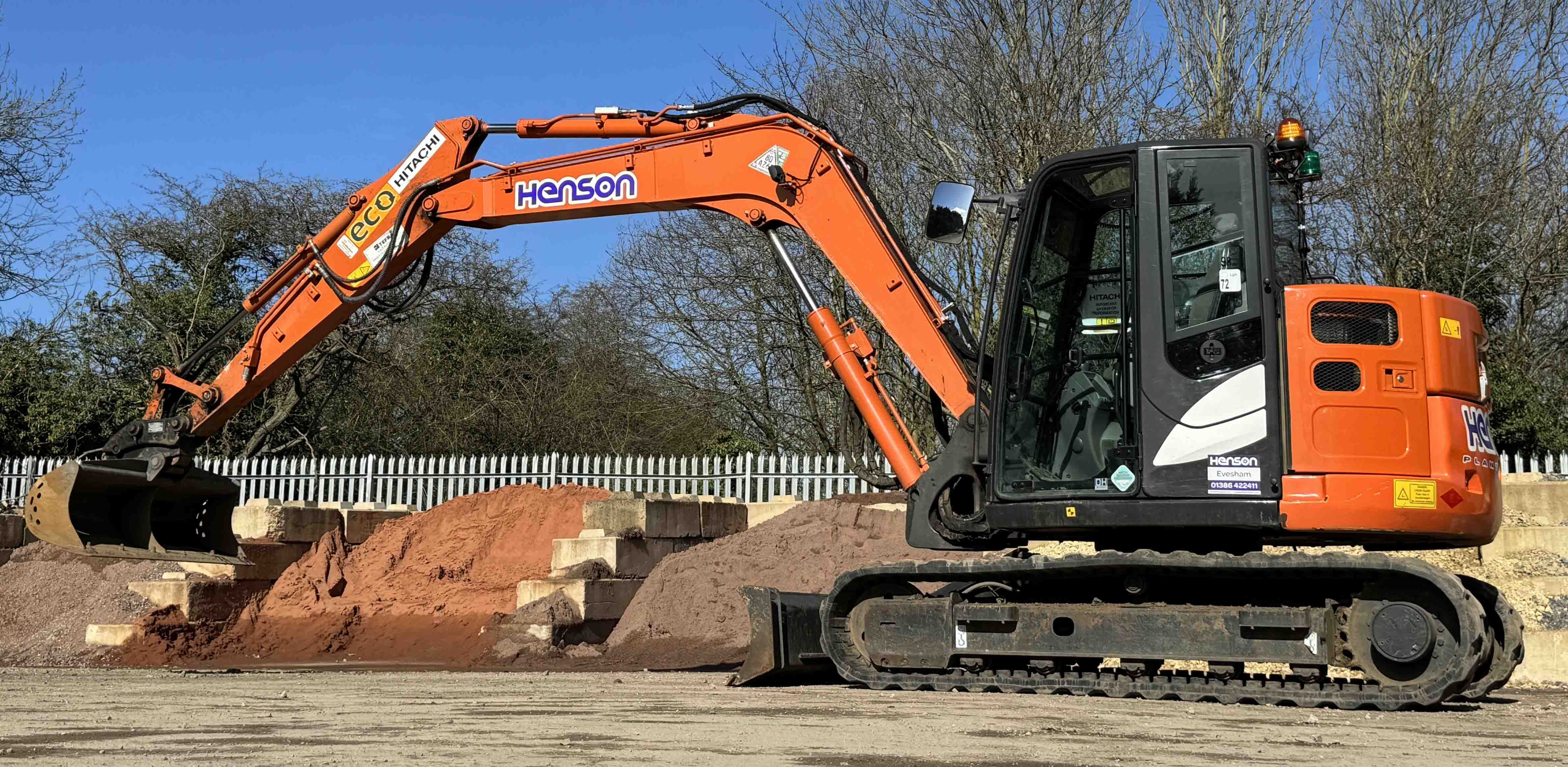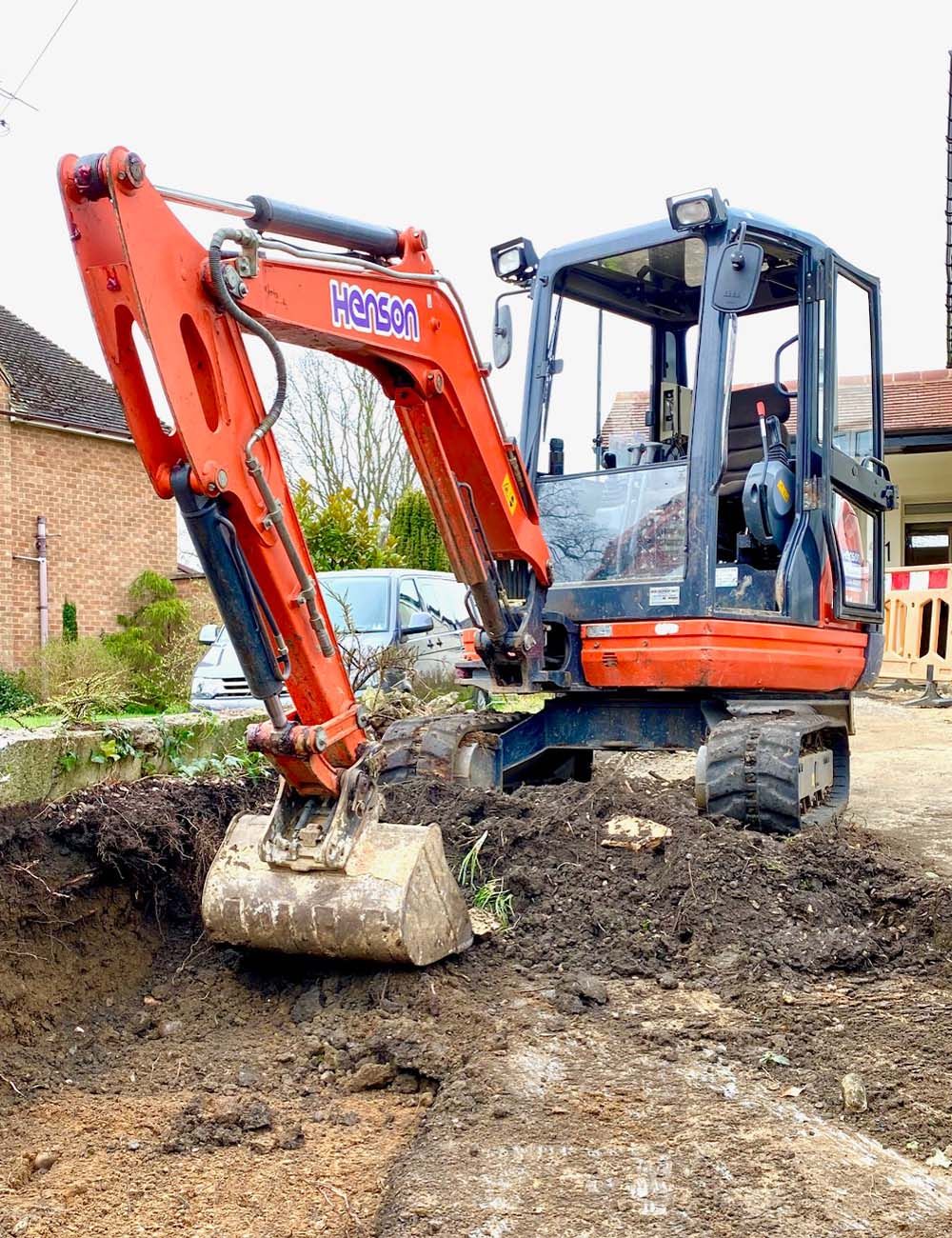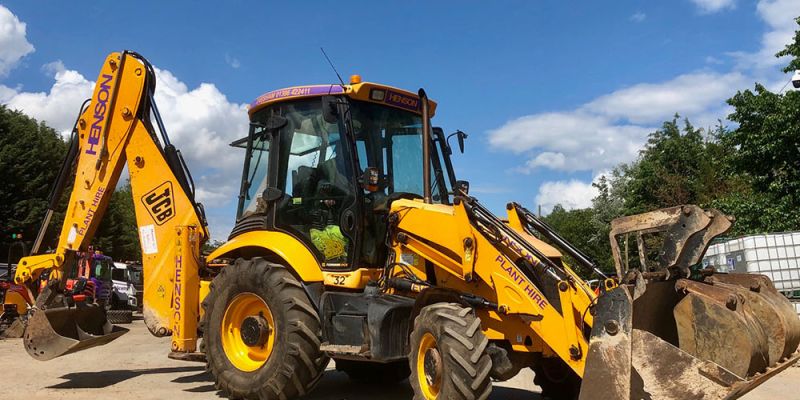
What is a Backhoe Loader?
Blog
In the vast world of construction and excavation, one powerful machine stands out for its versatility and efficiency: the Backhoe Loader. This remarkable piece of equipment combines the capabilities of a loader and a backhoe, making it an invaluable asset in various industries and projects.
Whether it's digging trenches, loading materials, or clearing obstacles, the backhoe loader is a true powerhouse that will help in getting the job done. With many reputable companies like JCB, Caterpillar, CASE and Komatsu to name a few, this machinery is a popular tool for many jobs not only in the UK but around the world.
What does a backhoe loader look like?
Backhoe loaders are heavy equipment vehicles made up of tractor-like units with a loader shovel/ bucket on the front and a backhoe on the back.
While the specific design may vary slightly among different manufacturers, a backhoe loader typically has these elements:
-
The Tractor: The main body of the machine. The backhoe loaders rest on a sturdy tractor-like chassis, which provides stability and mobility. It is equipped with four wheels and stabiliser legs for manoeuvrability on multiple different terrains.
-
The Loader: The loader, located at the front end of backhoe loaders, are a large bucket attachment. The bucket can be raised, lowered, and tilted to scoop, lift, and transport materials such as soil, gravel, or debris via a hydraulic system.
-
Backhoe: The backhoe is mounted on the rear of the machine and consists of a digger arm or boom with a bucket attachment. It can rotate 180 degrees, allowing for precise digging and placement of materials.
-
Operator Cabin: The operator cabin is where the operator sits on backhoe loaders. It offers a comfortable working environment and provides good visibility for optimal control.
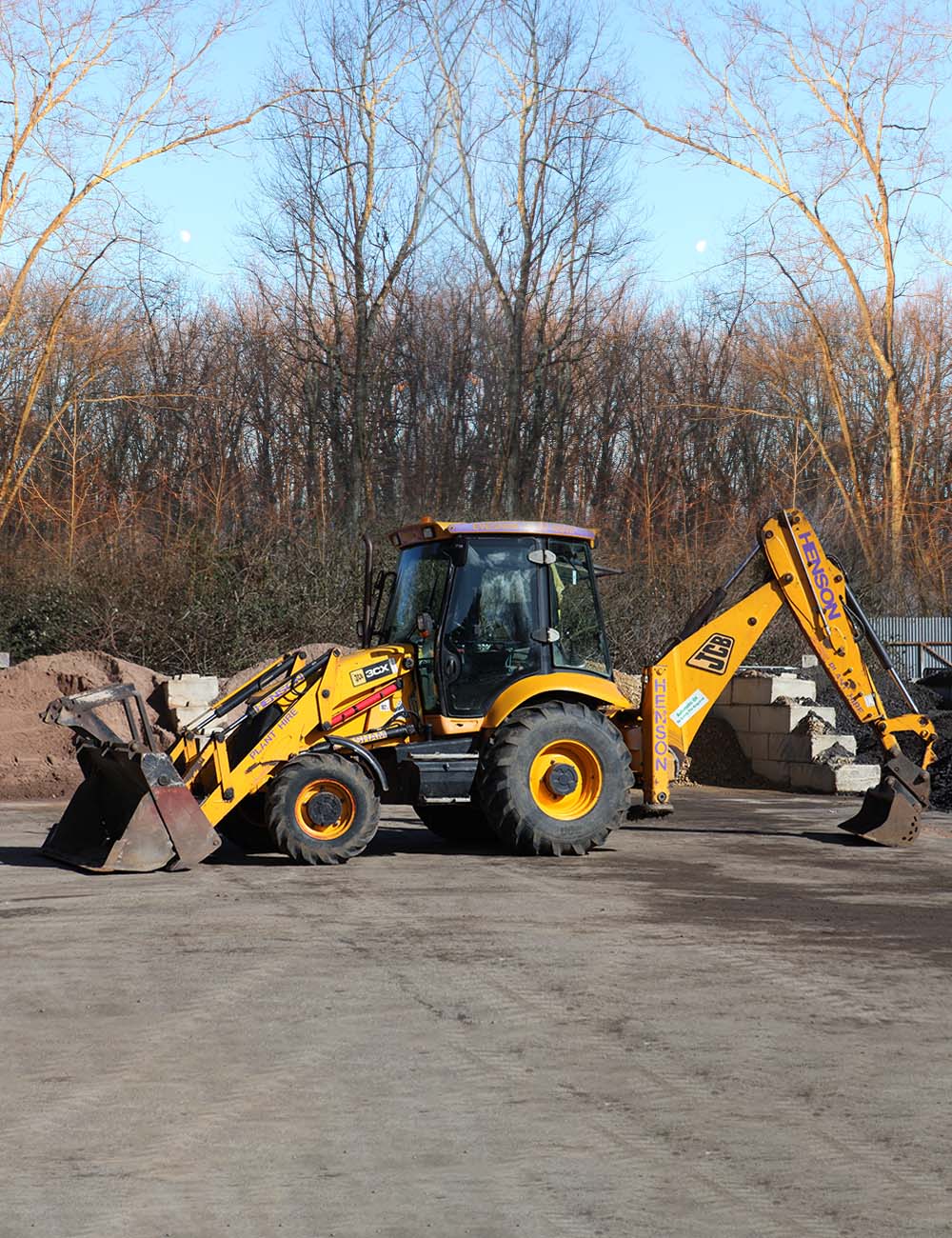
What are backhoe loaders used for?
A backhoe is a versatile piece of equipment used primarily in landscaping, construction, excavation, and agricultural projects. It combines the capabilities of a loader and an excavator, making it suitable for a wide range of tasks. Let's take a look at how they're used below:
Excavation and Trenching
Backhoe loaders excel at digging and trenching. They can dig trenches for utility lines, back filling, foundations, or drainage systems precisely and efficiently.
Loading and Material Handling
With its front loader attachment, a backhoe can lift and transport materials such as soil, gravel, sand, or debris. This feature helps load trucks, move bulk materials, or stockpile on a worksite.
Demolition
Backhoe loaders are often used in demolition projects to break down structures, remove debris, or clear land. The powerful digging arm and bucket attachment allow for practical demolition work.
Utility and Construction Work
Backhoe loaders are commonly employed in utility projects, such as installing pipes, cables, or underground utilities. They can also assist in construction tasks like digging footings, excavating building sites, or backfilling.
Landscaping
Backhoe loaders are valuable in landscaping projects, including grading land, digging ponds, shaping slopes, or moving large amounts of earth. Their versatility and manoeuvrability make them ideal for creating and modifying outdoor spaces.
Snow Removal
In colder climates, backhoe loaders can be used for snow removal. They can plough or push snow, clear driveways, or remove snow from large areas quickly and efficiently.
Agricultural tasks
Backhoe loaders find applications in agriculture, such as digging irrigation trenches, cleaning ditches, or clearing land for crop cultivation.
Road Maintenance
Backhoe loaders play a role in road maintenance and repair. They can dig potholes, remove damaged asphalt or concrete, repair drainage systems, or assist in resurfacing projects.
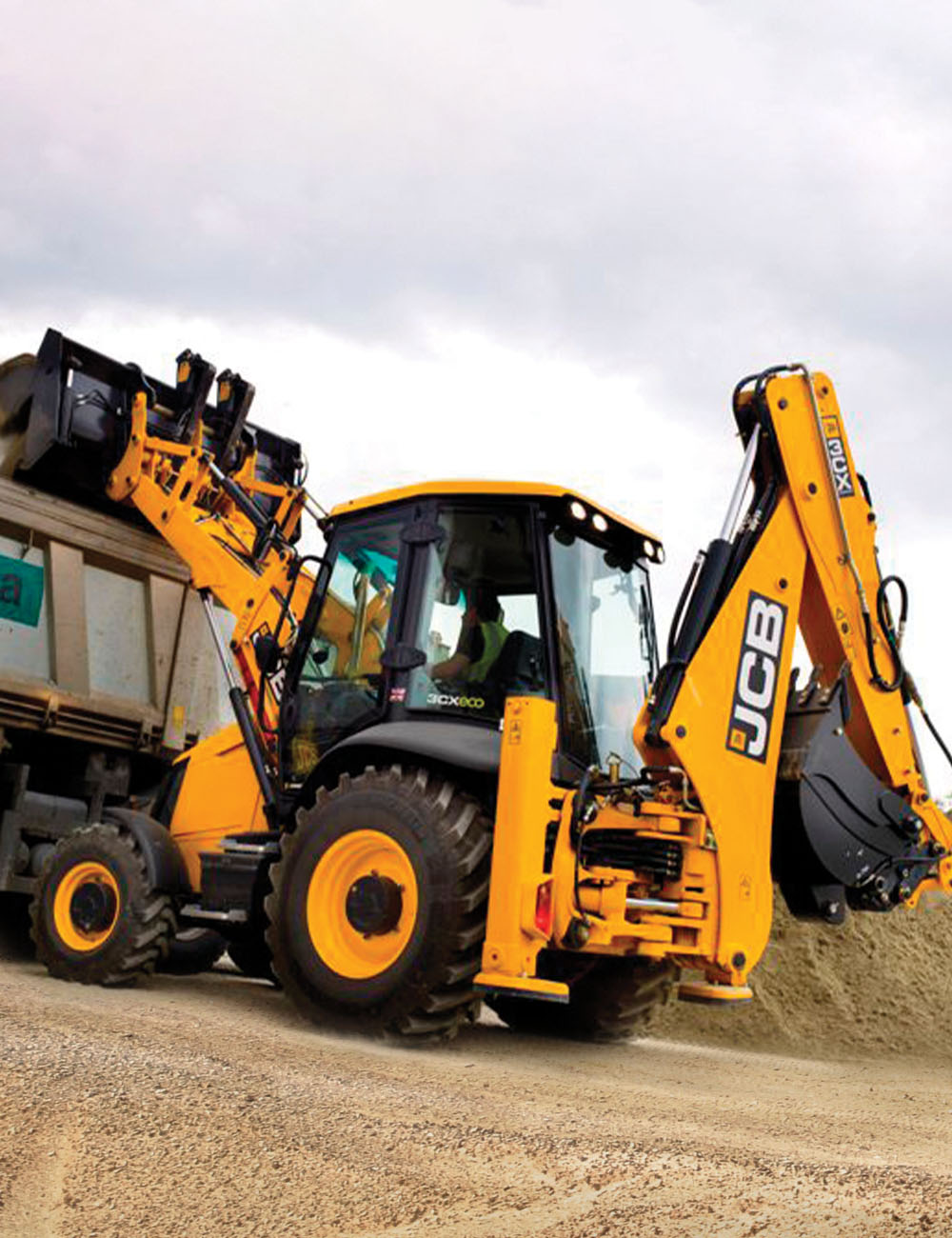
Why choose backhoe loaders over other machines?
There are so many machines within the industry that can be used for many different tasks, so the question is, why use a one?
Terrain versatility
Backhoe loaders are designed to work on various terrains. They can handle different types of terrain, including rocky soil, rough ground, hard-packed surfaces, flat surfaces, and even inclined surfaces.
Size
Backhoes are relatively compact compared to larger construction equipment such as excavators or bulldozers. Their smaller size allows them to manoeuvre in tight spaces and work efficiently in urban areas or confined worksites where larger equipment may not be doable.
Cost-Effective:
Backhoes can be a cost-effective choice for small to medium-sized projects. They are generally more affordable to purchase or rent compared to specialised equipment for sale like excavators or loaders. Additionally, their versatility eliminates the need for investing in multiple machines, reducing overall costs.
Transportation Convenience:
Backhoes are commonly more compact in comparison to a lot of other machines - making them easier to transport from one site to another. They can be quickly loaded onto trailers and transported without requiring special permits or oversized hauling equipment.
Attachment Compatibility:
Backhoes are compatible with various attachments. This flexibility enables them to perform specialised tasks beyond their core functions. Attachments such as augers, hydraulic hammers and grapples can be easily added to enhance the capabilities of this machine
Why choose a Backhoe loaders?
When comparing backhoe machines to other alternatives, there are several factors to consider. Let's compare the backhoe loader to their other popular options.
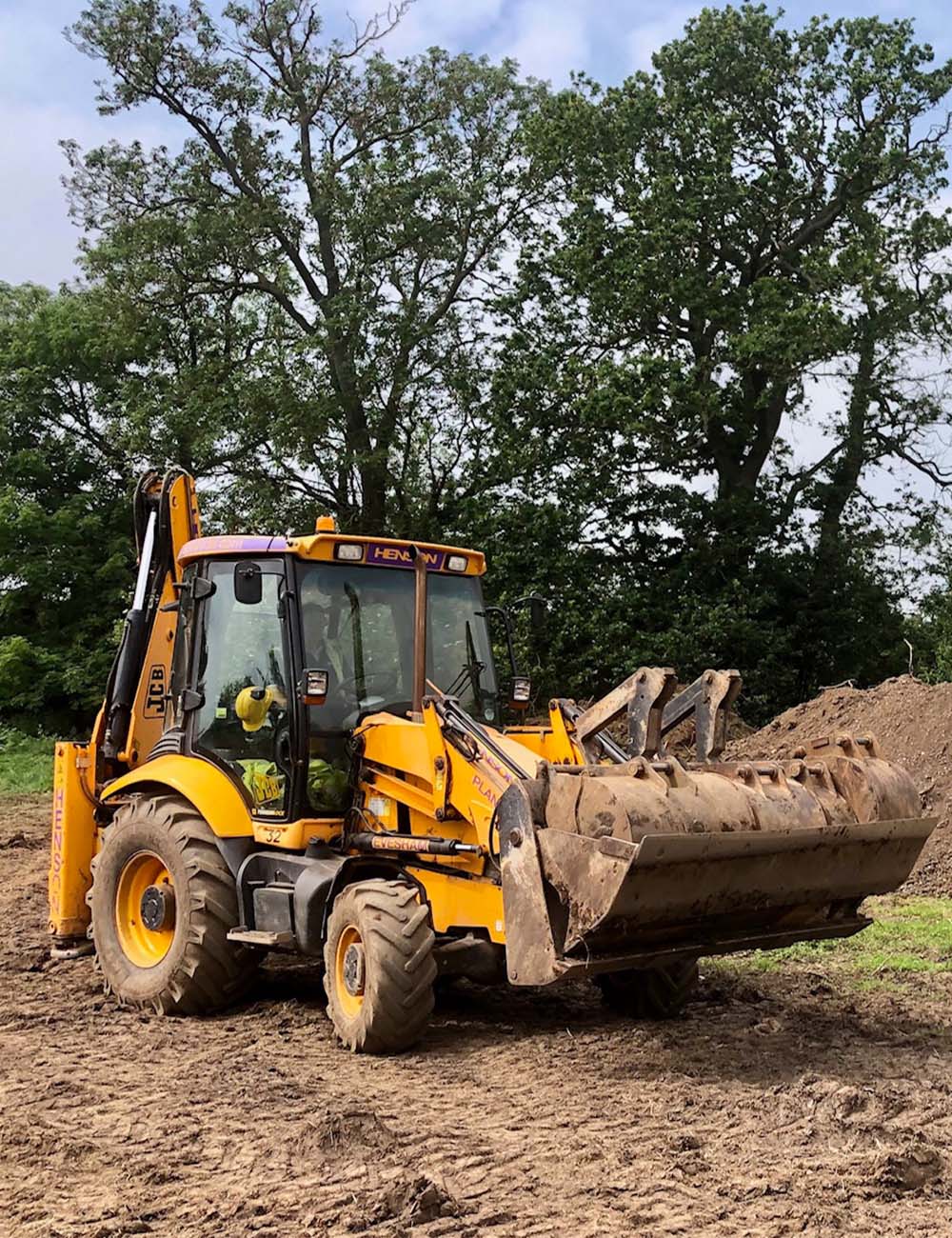
Backhoe vs. Excavator
-
Size comparison: Excavators are generally larger and heavier than backhoes.
-
Versatility: Backhoes are considered more versatile for rugged environments and heavy-duty work demands, while excavators are better suited for larger, more open job sites.
-
Functions: Backhoes are used for a broader range of reasons. They combine a loader attachment at the front and a backhoe attachment at the rear, allowing them to handle digging, trenching, and material handling tasks. Excavators are primarily designed for excavation and digging purposes.
Backhoe vs. Skid Steer Loader
-
Size comparison: Skid steer loaders are typically smaller than backhoes.
-
Manoeuvrability: Skid steer loaders are highly manoeuvrable and can operate in tight spaces, making them ideal for small or constricted job sites. Backhoes are less agile than skid steer loaders.
-
Functions: Backhoes offer the advantage of having both a loader and a backhoe, making them suitable for various tasks.
Backhoe vs. Bulldozer
-
Functions: Backhoes are versatile machines performing digging, trenching, material handling, and other tasks. Bulldozers are primarily used for grading work, land clearing, and pushing material.
Backhoe vs. Wheel Loader
-
Speed and Manoeuvrability: Wheel loaders tend to be faster and more manoeuvrable, making them efficient for transporting materials on job sites. Backhoes offer versatility for digging applications.
-
Bucket Capacity: Backhoes often have a larger bucket capacity than wheel loaders.
What types of attachments are there?
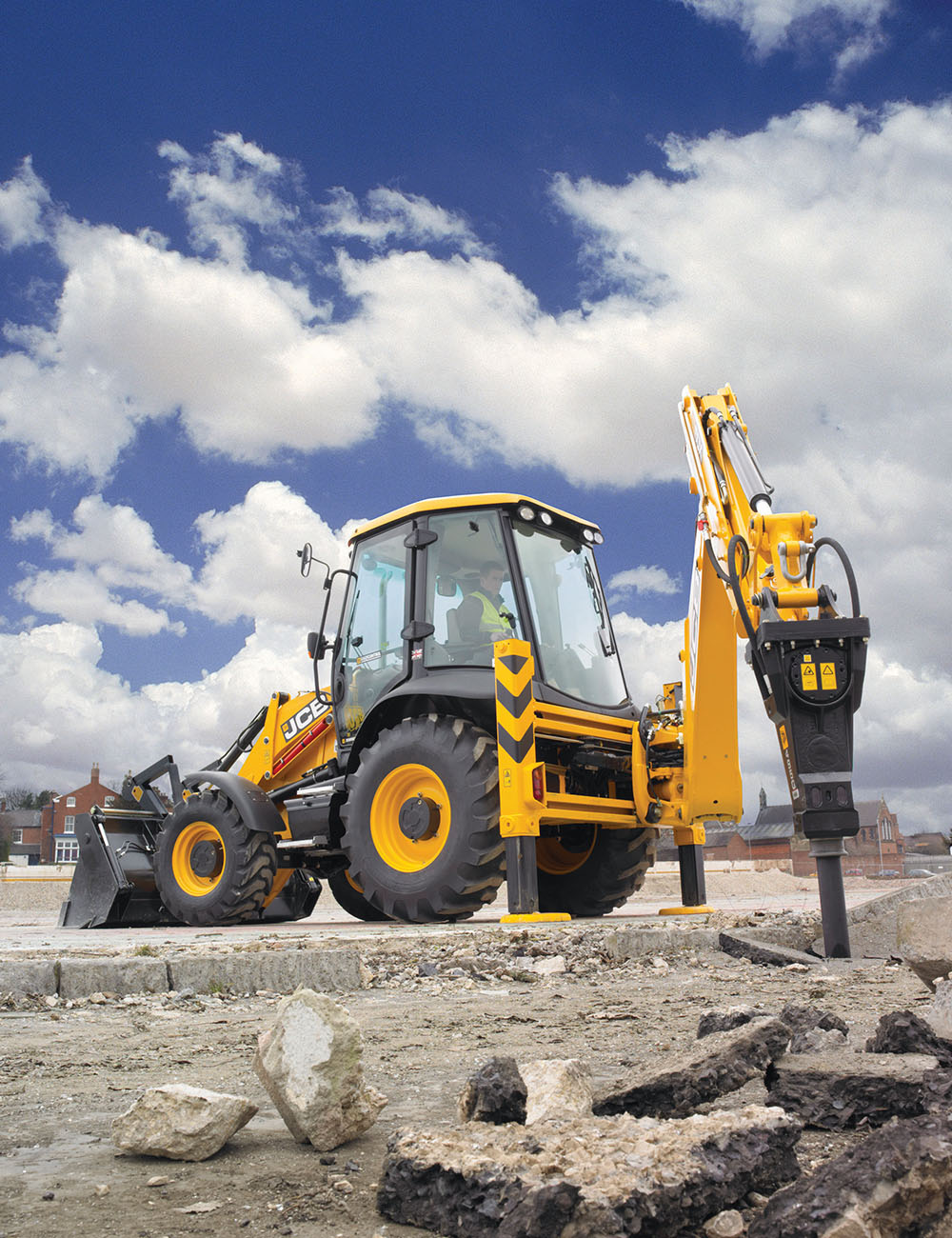
There are many different types of attachments on a backhoe machine to help perform various tasks for different things. We can list nine popular options below:
Augers
-
Augers are used for drilling holes deep into the ground, often for installing fence posts, signposts, or tree planting.
-
They can dig up to 32 feet deep.
Brooms
-
Brooms are used for sweeping debris, dirt, or snow from surfaces such as roads, parking lots, or sidewalks.
-
They're equipped with heavy-duty steel or poly bristles.
Buckets
-
Buckets are the standard attachments for backhoes, used for digging, excavating, and moving debris like soil, gravel, or sand.
-
They are a steel attachment with teeth-like edges.
Couplers
-
Couplers allow quick and easy attachment changes - enabling the operator to switch between attachments without leaving the machine.
Grapples
-
A grapple is used for grasping and lifting materials such as logs, rocks, or debris. It provides a secure grip for moving and placing objects.
-
Grapples are made up of two rows of teeth that come together to secure the materials.
Hammers
-
Hammers (also known as hydraulic breakers) are used for breaking up concrete, asphalt, or rock surfaces.
-
They're ideal for construction, demolition and quarrying.
Rippers
-
Rippers are used for breaking up hard-packed surfaces or compacted soil, making it easier for excavation or grading.
-
They have a claw ideal for cutting through frozen ground/ice or other hard materials.
Snowploughs
-
Snow Plough attachments are designed for clearing snow from roads, parking lots, or driveways. It helps with efficient snow removal.
Thumb
-
Thumbs are a mechanical or hydraulic attachment that provides a gripping mechanism on the backhoe bucket, allowing the operator to hold objects and pick up materials securely.
-
Thumb attachments are good for broken tree limbs and tree trunks.
How do these attachments work with Backhoe machines?
Backhoe loaders have evolved to become the versatile and efficient machines they are today. In the late 1940s, a hydraulic digging attachment was developed, which marked a significant advancement in backhoe loader technology.
The hydraulic system provides the power necessary to operate and control these attachments effectively. Different types of hydraulic systems help various attachments perform different things:
Unidirectional Hydraulic System:
In a unidirectional hydraulic system, hydraulic fluid flows in one direction only. This system is commonly used for applications where power needs to be transmitted in a single direction, such as hammers.
Bidirectional Hydraulic System:
A bidirectional hydraulic system allows hydraulic fluid to flow in both directions. This system is commonly used in applications where power transmission is required in multiple directions, such as Thumbs.
The bidirectional system allows for precise control and reversible movement of hydraulic components.
Auxiliary Hydraulic System:
An auxiliary hydraulic system, also known as a third or auxiliary circuit, is an additional hydraulic system that is separate from the primary hydraulic system. It is designed to power auxiliary attachments and implements, such as grapples.
Each of these hydraulic system configurations serves specific purposes and is used in different types of machinery and applications. The choice of system depends on the particular requirements of the equipment and the tasks it needs to perform.
The popularity of backhoe loaders
The choice between backhoe loaders and other alternatives depends on the specific requirements of the job, the working environment, and the tasks at hand. It's recommended to assess factors such as size, versatility, functions, manoeuvrability, and bucket capacity to determine which machine will best suit your needs.
With all the information, we can see that a backhoe loader is a powerful and versatile piece of construction equipment. With its dual functionality, a backhoe loader offers the convenience of tackling multiple tasks with a single machine.
Whether you're a contractor, landscaper, or involved in any construction-related field, understanding what a backhoe loader is and the advantages it offers can help you make informed decisions when it comes to choosing the right equipment for your projects. So, if you're looking for a versatile machine that combines the power of digging and loading, a backhoe loader is definitely worth considering.
We would love to help you with your project - please do not hesitate to contact us with any questions or enquiries.
Articles
